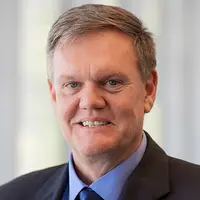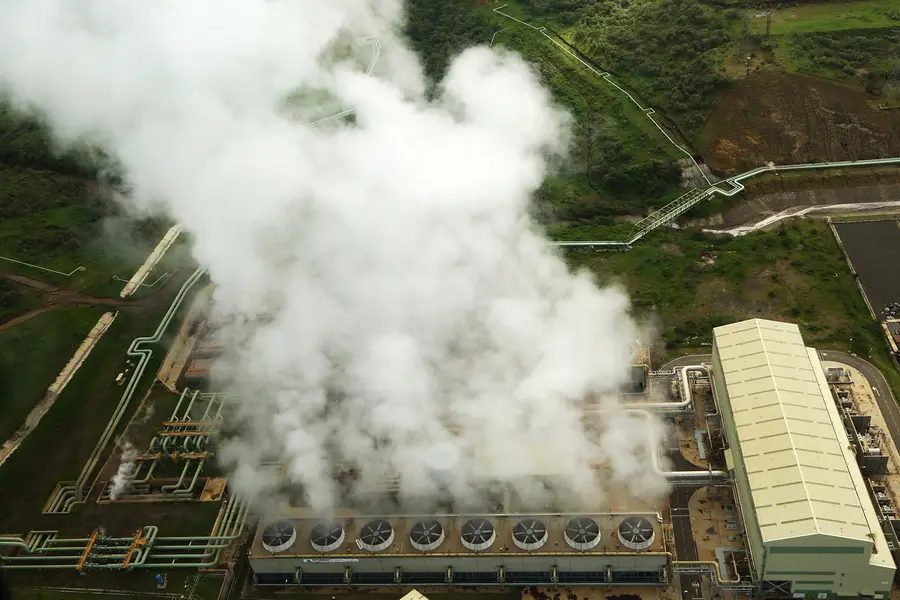On March 29, 2021, President Uhuru Kenyatta of Kenya appointed a task force for the review of all power purchase agreements (PPAs) entered into by the distribution utility, Kenya Power & Lighting Company (Kenya Power). The review has a particular focus on PPAs with independent power producers (IPPs) in Kenya, which has created concern on the part of the private sector, development partners, and the regional energy community. A 6-month moratorium on the approval/renewal of new PPAs has also been put in place as the task force executes its mandate. These developments can be partly attributed to genuine concern about the financial woes of Kenya Power, and partly to the perception that Kenya has an oversupply of power. The entire energy sector is closely watching Kenya’s responses to these challenges, given that the country has one of the most well-developed power sectors in sub-Saharan Africa and a relatively long and successful history with IPPs.
While it may appear that Kenya has more than sufficient power-generation capacity to meet current demand, the reality is that this oversupply narrative may be questionable, given that peak demand (as registered by Kenya Power) is not a reliable indicator of true demand. At any one time there are multiple power outages in the country, necessitating the routine dispatch of private backup generators. In some parts of Kenya, large industrial and commercial customers cannot load all their equipment during evening peak demand, due to depressed voltages (caused mainly by inadequate transmission and distribution capacity). Moreover, power-system controllers sometimes have to ask large power consumers to reduce their demand during peak hours, due to the thin margin between maximum peak demand (1,980 MW) and available generation capacity (2,100 – 2,300 MW, considering obligatory planned maintenance as well as breakdowns). Finally, Kenya Power has a backlog of new-connection applications, paid for but not yet connected, equivalent to an estimated demand of 250-350 MW (since not all the demand applied for will be coincident). This is yet more evidence that the short- to medium-term outlook for annual increases in Kenyan power consumption is strong enough to support continued growth in generation capacity.
Given that perceived oversupply obscures the need to build more generation, the confidence of the Kenyan private sector could wane, given chronic delays in power projects reaching financial close and the precarious financial health of Kenya Power. Despite these challenges, however, we believe Kenya has the necessary ambition and tools to successfully close the gap on supply/demand.
How much power does Kenya have?
Kenya has an installed capacity of 2,840 MW, of which the effective capacity, or the amount that is contracted to Kenya Power, the single buyer of power in the country, is 2,708 MW. This effective capacity, compared to maximum peak demand of 1,980 MW (energy used), implies a surplus capacity of 728 MW, or 36.8%. However, this calculation is not as straightforward as it seems, due to the types of generation sources involved, and warrants the continued development of generation assets in Kenya. Nearly 15%1 of Kenya’s effective capacity is made up of wind and solar resources, which are intermittent and provide varying availability during peak power demand. Almost 30%2 of effective capacity comes from hydropower, which is increasingly vulnerable to droughts – which will continue to grow in frequency and severity due to climate change. Additionally, unserved demand may be in the range of 200-300 MW, due to the impact of the distribution system on quality (reliability and voltage level), which impacts demand for power. Finally, Kenya’s registered maximum peak power demand understates real demand, thanks to frequent power outages—both planned (for maintenance) and forced (due to faults or breakdowns).
Further complicating matters, Kenya has experienced a decline in electricity demand as a result of COVID-19-related lockdowns and accompanying measures to curb the pandemic’s toll. As in other East African countries, these measures resulted in a slowdown in commercial and industrial (manufacturing) activity, which has impacted Kenya Power’s revenues. However, in Kenya, the impact on electricity power demand has been relatively short-lived, with only about three months (from mid-March to mid-June 2020) showing material declines. July and August 2020 saw average peak demand and consumption return to nearly pre-COVID-19 levels. However, energy demand is still constrained by the ongoing nationwide curfew. Notwithstanding the impact of COVID-19, there is every reason to believe that Kenya can achieve ongoing strong economic growth, which will require a secure and reliable power supply going forward.
As of April 2021, Kenya’s true available capacity on a day-to-day basis ranged from 2,100 to 2,300 MW. This adds up to a surplus capacity of 120 – 320 MW, rather than the 728 MW cited above, leaving little reserve margin for effective system operations and management. The discrepancy between true available capacity and effective capacity, combined with voltage constraints, demonstrate the need to reconcile the planning and implementation of generation projects with the planning and implementation of transmission and distribution networks.
Power Africa is planning for a moving target
Recently, we at the Power Africa East Africa Energy Program (EAEP) carried out a review of Kenya’s least-cost power-development plan (LCPDP) 2020-2040, the road map for the Kenyan power sector over the next 20 years. This 20-year LCPDP draft modestly forecast that Kenya’s energy demand would grow by 5.28% annually, and peak demand by 5.38% annually. These demand assumptions inform generation planning, which feeds into the perception of oversupply. Further, the LCPDP projected that Kenya’s installed generation capacity would increase to 3,529 MW in 2025, 5,152 MW in 2030, and 8,187 MW in 2040. This LCPDP’s goal to triple the effective energy capacity of Kenya by 2040 demonstrated a commitment to the economic growth that can sustain energy use at that scale.
However, a more recent update of the LCPDP, released by the Kenyan Ministry of Energy in May 21 and covering the 10-year period 2021-2030, contains even lower power- and energy-demand projections, factoring in the impact of COVID-19. Peak demand is now projected to grow by an average of 4.91% to 3,183 MW at the end of the planning period, under the “reference” scenario. Under the “vision” scenario, peak demand increases to 4,251 MW by 2030, an average growth rate of 7.99%. Under the “low” scenario, peak demand increases to 2,928MW by 2030, an average growth rate of 4.04%.
In this context, it is notable that peak demand in Kenya has already risen to 1980 MW from the pre-COVID-19 level of 1926 MW, despite ongoing 6-hour curfews from 10:00 PM to 4:00 AM, which have curtailed important commercial activities (such as the entertainment industry). This recovery of peak demand, and the observations above about unconnected paid-up demand and suppression of demand due to outages and network constraints, supports the view that the demand projections of the current LCPDP are too conservative.
We feel it is critical that, during its current decision-making process, the Government of Kenya considers its energy requirements in light of 1) the achievement of its medium-term industrialization agenda, 2) the realities of geothermal development, 3) the political and economic opportunities for cross-border trade, and 4) the turnaround of the financial situation of Kenya Power. For example:
- The projected level of geothermal power capacity in the 2020-2040 LCPDP is based on 20 projects, totaling 1590 MW, to be commissioned over the next 20 years. This level of development is unprecedented, given that geothermal power projects in Kenya have historically taken anywhere from 5 to 10 years to develop. In addition, many of the planned projects are from IPPs, and privately financed geothermal projects are particularly complicated and time-consuming to develop in Kenya. To respond to these challenges, Kenyan power entities have worked to create more timely and more transparent processes for geothermal development, with EAEP support.
- There is a largely untapped potential for power trade with Kenya’s neighbors. With many countries in East Africa either experiencing or forecasting energy surpluses, the likelihood of a massive regional surplus overpowering the existing system needs to be addressed. The power-balance statement of the Eastern Africa Power Pool (EAPP) uses country-specific generation plans (such as Kenya’s LCPDP), and projects that critical transmission infrastructure will be necessary to relieve regional surpluses and deficits and complement country-connection strategies. Trading with neighbors in EAPP can reduce Kenya’s cost per MW, depending on deal specifics, and wheeling through Kenya will provide additional revenue. Additionally, EAPP and the Southern Africa Power Pool (SAPP) hope to connect via the planned Tanzania-Zambia and Tanzania-Malawi power interconnectors, which will facilitate the opening of new markets in countries in southern Africa, such as Zambia and Malawi, that have been suffering ongoing power shortages.
- Finally, Kenya Power is on the path to recovery from its dire financial situation, yet the LCPDP and subsequent 10-year plan appear to be based on pessimistic prospects for the utility’s turnaround. Kenya Power has a strong mandate from the highest levels of the Kenyan government to oversee a rebound; this will involve the development of a credible utility-turnaround plan, which will restore confidence in the sector and ensure that the financial gains made over the last 20 years are not reversed. It is also important for the utility to address high system losses and rapidly increasing financing costs, since resolving these operational and financial issues can have an immediate impact. EAEP and other development partners continue to support Kenya Power’s leadership and operations teams to reduce commercial losses, recover revenue, and increase connections. In a relatively short time, Kenya Power is poised to become a stronger, more resilient utility, which will be able to meet the demands of Kenya Vision 2030 goals for industrial development.
Power in Kenya: Looking forward
An available and reliable power supply is necessary to lead economic development in Kenya, not follow it. Kenya’s power supply must be available, and secure, in order to attract major energy users who can contribute to the realization of the country’s Vision 2030 development goals. Kenya’s energy development is being watched closely for lessons learned by its neighbors and other energy actors in sub-Saharan African, especially given the prominence of private sector involvement in the country. We believe that Kenya should continue to embrace its role as leader in the fight to end energy poverty through private sector engagement, leading to a more resilient power sector throughout all of East Africa.
Learn more about RTI’s work in Kenya.
1 52 MW of solar PV capacity is not available when peak power demand occurs between 6:30 pm and 11:00 pm. 326 MW of wind power capacity is not all available during peak, and is assumed in sector studies to have an availability of 50% at best during peak demand periods (50% for LTWP and 25% for others).
2 805 MW of hydro is assumed in sector planning studies to have a firm capacity value of 630 MW during droughts, the frequency and severity of which have been increasing due to climate change.

